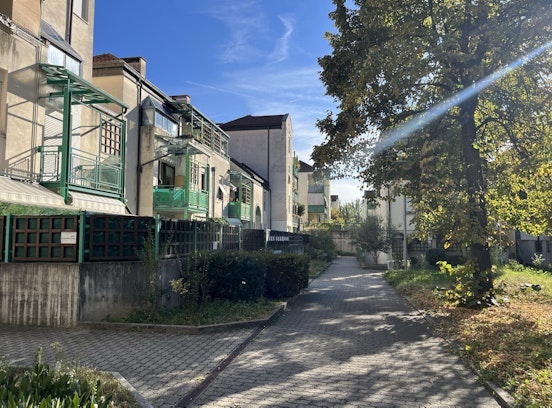Center for Climate Change and Transformation - Climate Neutral Society
Climate Neutral Society
- Deutsch
- English
- Italiano
We explore different future scenarios regarding interactions between climate and other related and parallel changes in a range of urban and rural built environments. By investigating the impacts and associations of population dynamics, buildings features and their uses, management, energy production and consumption, energy resilience, as well as land and surface usages, we address future challenges and find solutions for built environment, including key infrastructures. We define scenario for disaster response and recovery, and patterns of expected investment and disinvestment. Our research provides the data to transition, re-imagine, and redesign the built environment to be adaptive to future conditions. The process of decarbonization of the built environment must consider different domains that affect sustainability and resilience of society in rural and urban contexts. To support the transformation to be adaptive to future conditions and the development of risks mitigation measures, reducing impacts on people, building and infrastructure, it is needed to define a comprehensive and well-structured knowledge framework and a multi-domain modelling environment for the built environment. They will enable to define scenarios for climate neutral society in different social-economic and cultural contexts, also allowing the implementation of circular economy principles.
Multiple risks assessment in mitigation pathways
Establishment of a knowledge framework for a comprehensive assessment of risks affecting people, buildings and infrastructure in urban and rural areas, enabling the measurement of possible multiple impacts and the definition of scenarios for the implementation of different types of mitigation measures.
- microclimatic conditions (current and projected future under different scenarios);
- urban or rural context (including the built environment and relevant natural elements);
- performance of the individual building, considering the level of protection of people under different conditions. Multi-domain modelling is addressed to authorities governing a specific territory to define and monitor the implementation of regeneration plans towards resilient climate neutrality.
Multi-domains modelling for climate neutral and resilient systems
Development of a multi-domain modelling environment including:
- define common strategic scenarios and objectives based on circular economy principles;
- build and share a vision based on the strengthening of circular value chains (multi-level, multi-actor and cross-sectoral);
- exploit synergies in territorial strategic plans based on circularity principles toward climate neutrality.
Circular, adaptive and integrated value chains
Development of a methodological approach for the definition of a circular strategy in climate change mitigation and adaptation. The proposed approach makes it possible to


